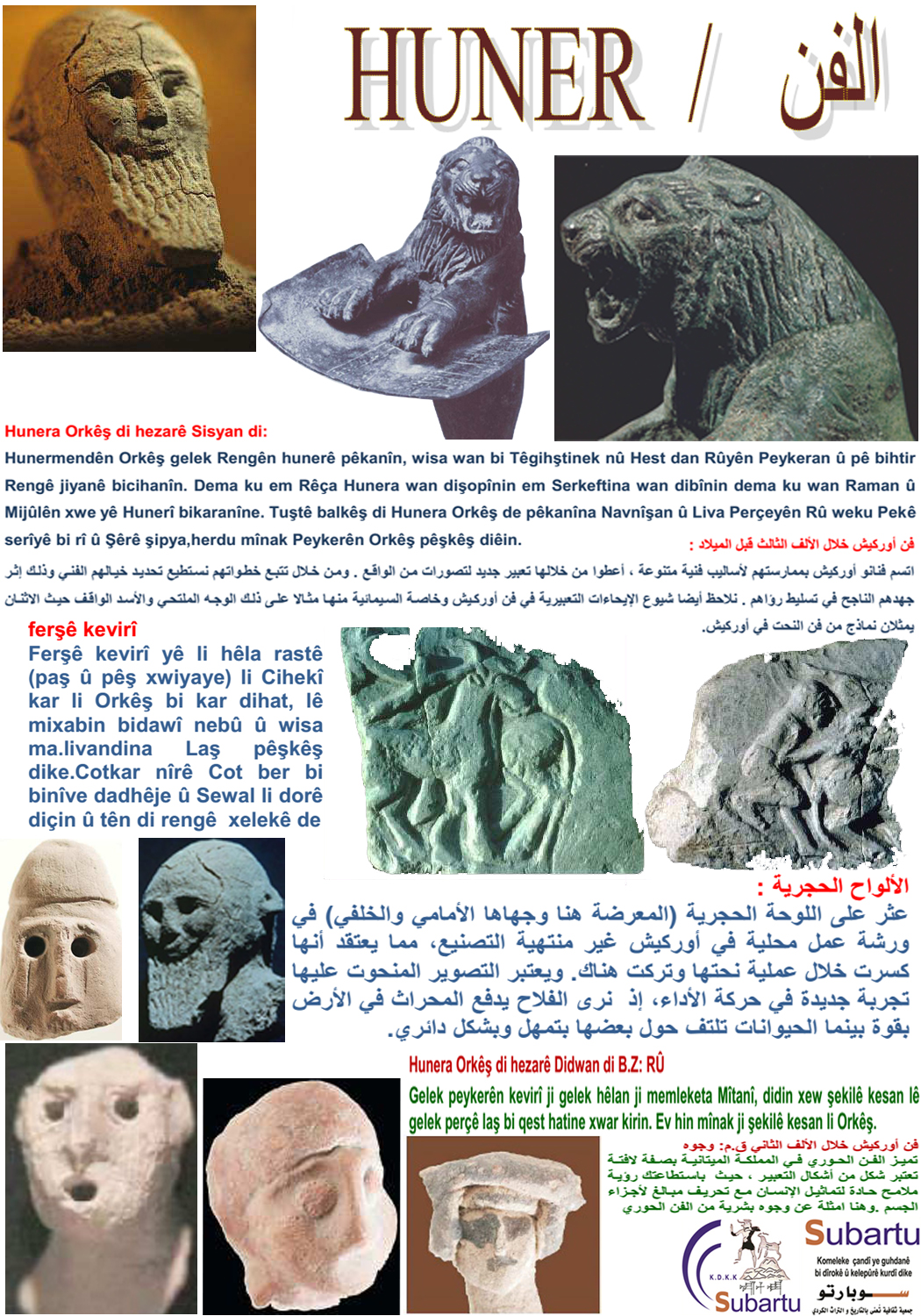Back to Subartu Exhibit
Next poster

|
Art
Art in Urkesh during the third millennium B.C.: Urkesh artists used a verity of artistic techniques, through which they gave a new expression to their perception of reality. And by tracing their steps, we were able to identify their artistic imagination. And this is attributed to their successful effort in reflecting that vision. We also notice expressionism in Urkesh art, especially symbolism, like the bearded face and the 2 lions, that represent modules of the sculpting art in Urkesh.
Stone stele: A stone stele was found unfinished (here we present the front and back) in a local workshop in Urkesh. It is believed that it was broken during the sculpting process and it was left there. The scene on it is considered innovative in the way the movement was executed. We see a farmer pushing the plow in the ground while animals are moving around each other in a circular motion.
Art in Urkesh during the second millennium B.C. - Faces: The Hurrian art in the Mittani Kingdom had a special traits that was considered a form of expressionism, where you can see really sharp features in the human representations with a slight distortion of some body parts. Here are some examples of human faces from the Hurrian art.
|